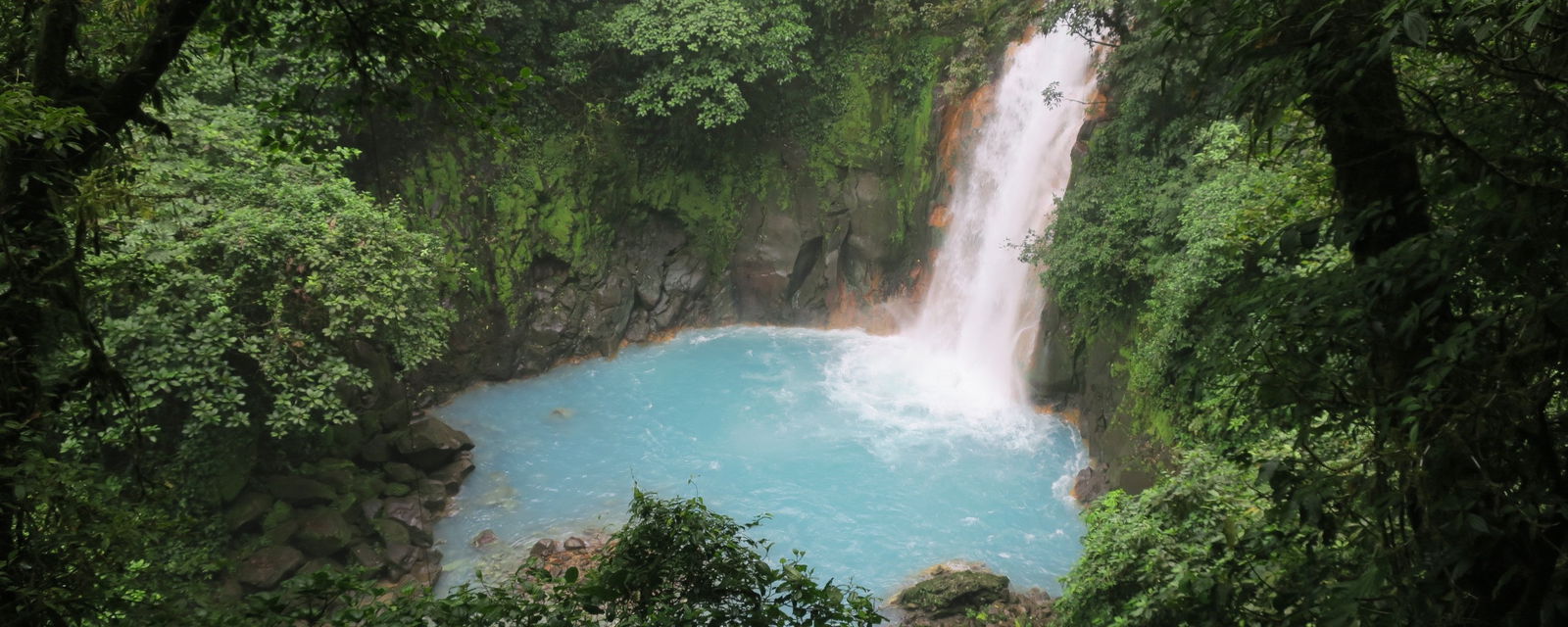


The second largest city in the country, Alajuela is known mainly for the beautiful scenery, the abundance of tropical and exotic crops that grow here and the bountiful nature surrounding. Known as the City of Mangoes, the region definitely celebrates its fruit—they even have a yearly festival to honor the mango. Visitors here, when not soaking up local culture, enjoy the natural hot springs, they check out the volcanoes and hike along the Rio Celeste, the breathtaking color of its ultra blue waters cannot really be experienced through mere pictures.
At one time the Arenal Volcano was one of the most active in the world. Tourists also flock to both the Poas Volcano as well as the Tenorio Volcano which boasts four impressive peaks and two craters for people to explore.
A small town in the Alajuela region, Sarchi embodies the true spirit of art and crafts in northern Costa Rica. There are tons of artisanal shops lining the streets. But their main specialty is furniture. Wooden items, from everyday bowls to large tables, show off the craftsmanship of the people within this town.
This Alajuelan gem is heralded as a sanctuary for many of the region’s endangered species. Hiking through the park, visitors, if lucky, can spot up to 100 species of birds, over 40 different kinds of amphibians and thirty plus mammal species.

Alajuela's winter, which falls between December and February, is a great time to visit this region as it offers pleasant weather with temperatures ranging from the mid-60s to low 80s Fahrenheit. The dry season allows for outdoor activities and exploration. Winter is perfect for visiting the Poas Volcano National Park and La Paz Waterfall Gardens to witness stunning natural wonders. Visitors can also explore coffee plantations and learn about the coffee-making process, which Costa Rica is famous for.

Spring in Alajuela, from March to May, brings slightly warmer temperatures with highs in the 70s to mid-80s Fahrenheit. The landscape remains lush and green from the previous rainy season. Spring is ideal for hiking in the Arenal Volcano National Park, where visitors can experience a diverse range of flora and fauna. The town of Zarcero is known for its beautiful topiary gardens and is worth a visit during this season.

Alajuela's summer, from June to August, is the beginning of the rainy season. While it can be hot and humid with temperatures in the 70s to mid-80s Fahrenheit, it also provides a refreshing respite from the dry season. Summer offers opportunities to explore the Juan Castro Blanco National Park, known for its cloud forests and natural hot springs. Visitors can also enjoy white-water rafting on the Sarapiqui River.

Fall in Alajuela, from September to November, is the peak of the rainy season. The weather remains warm and humid, with temperatures ranging from the mid-60s to low 80s Fahrenheit. Despite the rains, fall is an excellent time to visit as the landscapes are lush and vibrant. Visitors can explore the Rio Celeste, a stunning blue river, and hike in the Monteverde Cloud Forest Reserve, renowned for its biodiversity and unique ecosystem.
